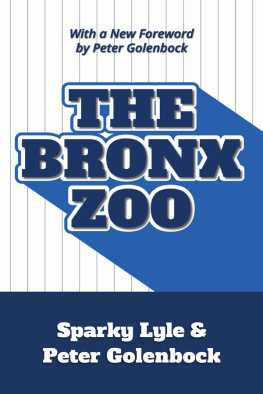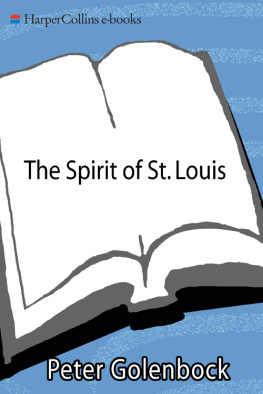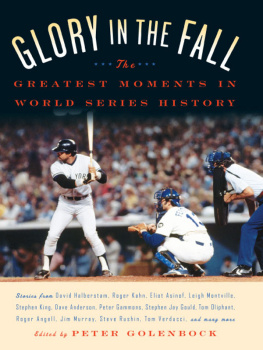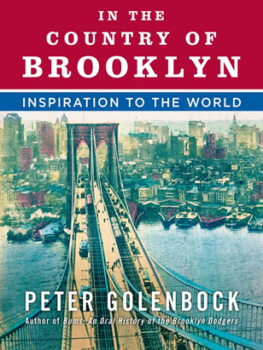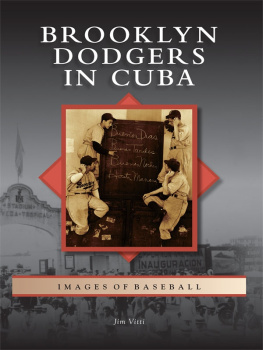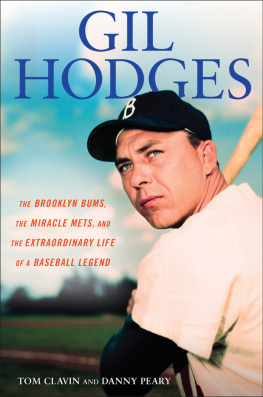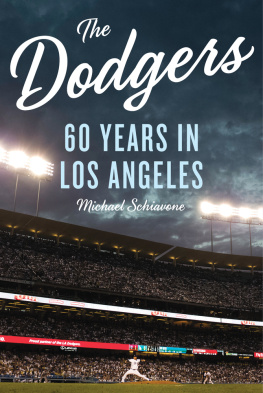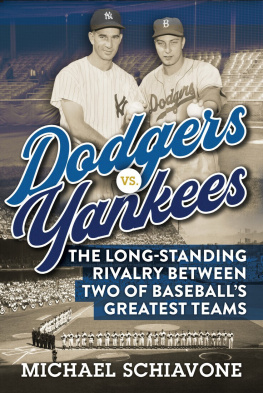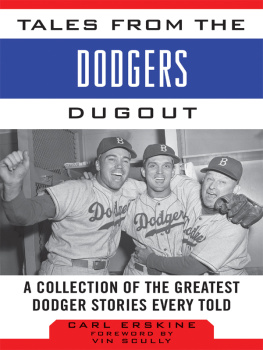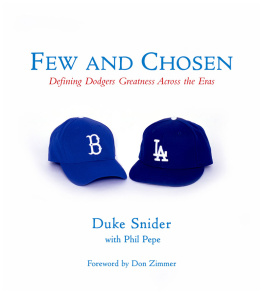ACKNOWLEDGMENTS
The author gratefully acknowledges permission from the following sources to reprint material in their control:
The Daily News for the untitled poem by Dan Parker, published in 1945. copyright 1945 by The Daily News.
John Holway for material from Voices from the Great Black Baseball Leagues by John Holway, copyright 1975 by John Holway. Published by Dodd. Mead & Company, Inc.
Roger Kahn and Harper & Row, Inc. for material from The Boys of Summer by Roger Kahn, copyright 1971, 1972 by Roger Kahn
The New York Post for columns from the New York Post by Jimmy Cannon (February, 1949, copyright 1949 by The New York Post) and Milton Gross (October. 1956, copyright 1956 by The New York Post).
The New York Times for the headlines Shotton Upholds Stock, from an article published October 2, 1950, copyright 1950 by The New York Times Company.
Harold Parrott and Holt. Rinehart and Winston Publishers for material from The Lords of Baseball by Harold Parrott, copyright 1976 by Harold Parrott.
Viking Penguin Inc. for the poem Hometown Piece for Messrs. Alston and Reese" by Marianne Moore in The Complete Poems of Marianne Moore, copyright 1959 by Marianne Moore.
Viking Penguin Inc. and Frank Graham. Jr. for material from A Farewell to Heroes by Frank Graham, Jr., copyright 1981 by Frank Graham, Jr.
Also by Peter Golenbock
The Bronx Zoo (with Sparky Lyle), 1979
Guidry (with Ron Guidry), 1980
Number 1 (with Billy Martin), 1980
Bums: An Oral History of the Brooklyn Dodgers, 1984
Balls (with Graig Nettles), 1984
Pete Rose on Hitting: How to Hit Better than Anybody (with Pete Rose), 1985
Bats, 1986
How to Win at Rotisserie Baseball: The Strategic Guide to America's New National (Armchair) Pastime, 1987
Personal Fouls, 1989
Teammates, 1990
The Forever Boys: The Bittersweet World of Major League Baseball as Seen through the Eyes of the Men Who Played One More Time, 1991
Fenway: An Unexpurgated History of the Boston Red Sox, 1992
American Zoom: Stock Car Racing, from the Dirt Tracks to Daytona, 1993
Wild, High and Tight: The Life and Death of Billy Martin, 1994
Wrigleyville: A Magical History Tour of the Chicago Cubs, 1996
The Stock Car Racing Encyclopedia, 1997
Cowboys Have Always Been My Heroes: The Definitive Oral History of America's Team, 1997
The Last Lap: The Life and Times of NASCAR's Legendary Heroes, 1998
The Superstar Hitter's Bible: Winning Tips, Techniques, and Strategies from Baseballs Top Players, 1998
No Fear: Ernie Irvan, the NASCAR Driver's Story of Tragedy and Triumph, (with Ernie Irvan and Debra Hart Nelson), 1999
The Spirit of St. Louis: A History of the St. Louis Cardinals and Browns, 2000
Hank Aaron: Brave in Every Way, 2001
Total Stock Car Racing (Editor, with Greg Fielden and Russ Thompson), 2001
Go Gators!: An Oral History of Florida's Pursuit of Gridiron Glory, 2002
Amazin': The Miraculous History of New York's Most Beloved Baseball Team, 2002
Thunder and Lightning: A No-B.S. Hockey Memoir (with Phil Esposito), 2003
NASCAR Encyclopedia (Editor, with Greg Fielden), 2003
NASCAR Confidential: Stories of the Men and Women Who Made Stock Car Racing Great, 2004
Red Sox Nation: An Unexpurgated History of the Boston Red Sox, 2005
Landry's Boys: An Oral History of a Team and an Era, 2005
Idiot: Beating The Curse and Enjoying the Game of Life (with Johnny Damon), 2005
Miracle: Bobby Allison and the Saga of the Alabama Gang, 2006
7: The Mickey Mantle Novel, 2007
In the Country of Brooklyn (with Tony Curtis), 2008
American Prince, 2008
George: The Poor Little Rich Boy Who Built the Yankee Empire, 2009
Presumed Guilty, 2012
They Called Me God: The Best Umpire Who Ever Lived, 2014 (with Doug Harvey)
Charley Ebbets
Acoldhearted scalawag by the name of Ned Hanlon was determined to do in1902 what a ruthless, money-hungry scalawag by the name of WalterOMalley ended up doing fifty-five years later: Hanlon wanted totransfer the boroughs beloved baseball team out of Brooklyn. AndHanlon might well have gotten his way, except for one steadfastly loyalDodger employee who not only loved Brooklyn passionately but had a deepand unwavering faith that there was something very special aboutplaying there. Brooklyn was his life, and it was his home. CharleyEbbets was the employees name, Brooklyns first recorded saint.
Sinceits founding in 1883, Ebbets had labored for the team, called theDodgers because the ballpark was situated at a confluence of trolleytracks, and one took ones life in ones own hands dodging the trolleycars to get to the game. He began as a program and ticket hawker, andas the owners came to recognize his industriousness and loyalty, he waselevated to business manager. Majority stockholder Harry von der Horstrewarded Ebbets, making him an owner by selling him several of hisshares, von der Horst was impressed with Ebbets and figured he wouldwork even harder if he were a part owner. When in 1902, Harry Von derHorst became ill, he put his stock interest up for sale. It was thenthat Hanlon, the Dodger manager, announced his intention to buy thestock, take over the team, and move it to Baltimore, where he hadpreviously managed.
Ebbets had no money, buthe swore that he would find a way to keep the Dodgers in Brooklyn. Hesummoned all of his friends, and after pleading the merits of baseballin Brooklyn, he found one man of means, a furniture dealerHenryMedicuswho had enough faith in Ebbets that he lent him the funds tobuy Von der Horsts stock. And so it was that Ebbets, not Hanlon,became the new owner of the Dodgers. And as a result, the Dodgersstayed.
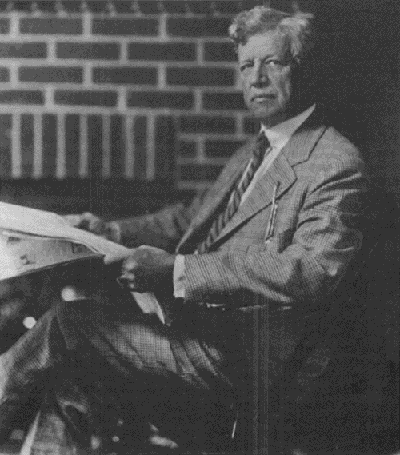
CHARLES EBBETS
Fromthe first, Ebbets showed he was an uncommon team ownerhe believed thathis first loyalty should be to the fans. Ebbets was operatingdangerously in debt. He didnt have money for new players, and the teamrarely finished in the top half of the standings, but when in 1906 therival New York Giants, led by another former Baltimore star, JohnMcGraw, offered him a fabulous sum of $30,000 for two of his bestplayers, Ebbets refused to give in to the sweet allure of the money. Hetold a friend, The Brooklyn fans deserve the best team I can givethem.
And for his fans, Ebbets dreamed of amodern park that would seat more than 25,000. Brooklyn wasnt much morethan a series of cow pastures then, and to his associates that parkEbbets wanted to build seemed to be folly.
TheDodgers played in a wooden stadium called Washington Park, so namedbecause it stood on a site where George Washington fought one of astring of losing battles against the British during the RevolutionaryWar. Ebbets would take walks through the borough in search of a sitefor the stadium he was determined to erect. While walking throughFlatbush, searching, he wandered through a malodorousfour-and-a-half-acre slum in the notorious Pigtown section. It was awild, craggy piece of land, with shanties scattered over it, and in themiddle of this nest of poverty was a large, gaping pit into which theshanty dwellers threw their fetid, steaming garbage. Farmers from thearea brought their pigs there to feed. Hence Pigtown.
Whenhe checked the deeds to see who owned the land, Ebbets discovered fortyclaims of ownership, either by deed or squatters rights. He formed acorporation and, disguising his true purpose, bought the first parcelin 1908. Midway through the three years it took him to secure the otherparcels, word leaked out as to his objective, and several of the plotowners hiked their prices sharply. By the end of 1911, he had been ableto acquire the entire area except for one parcelhe had been unable tolocate the owner. Private dicks traced the man first to California,then to Berlin, then to Paris. Ultimately he was foundin Montclair,New Jersey.


